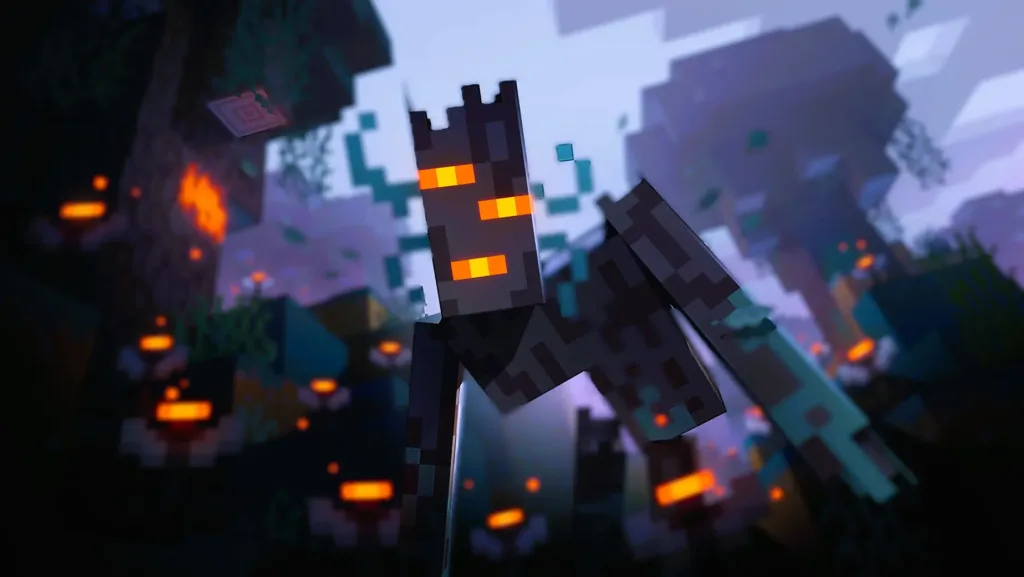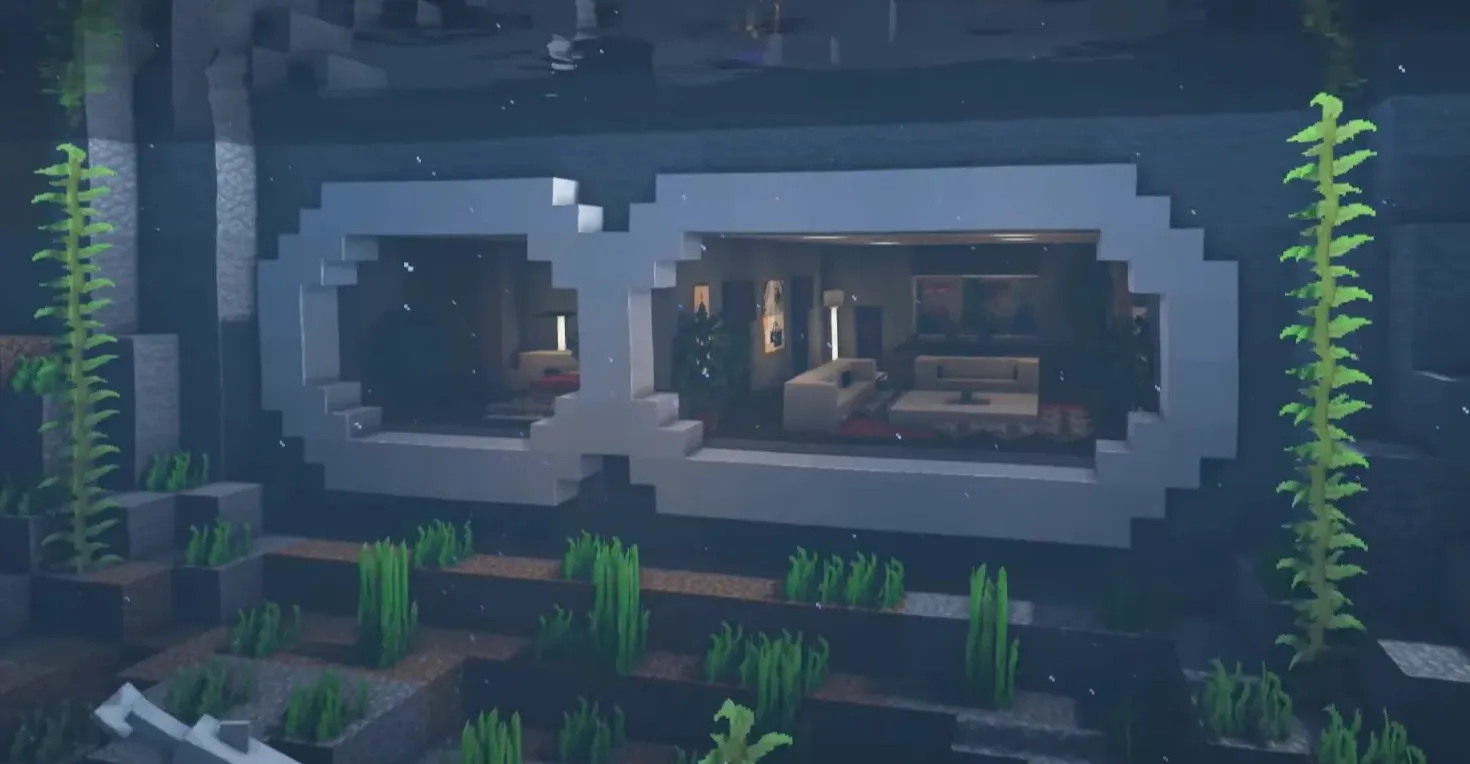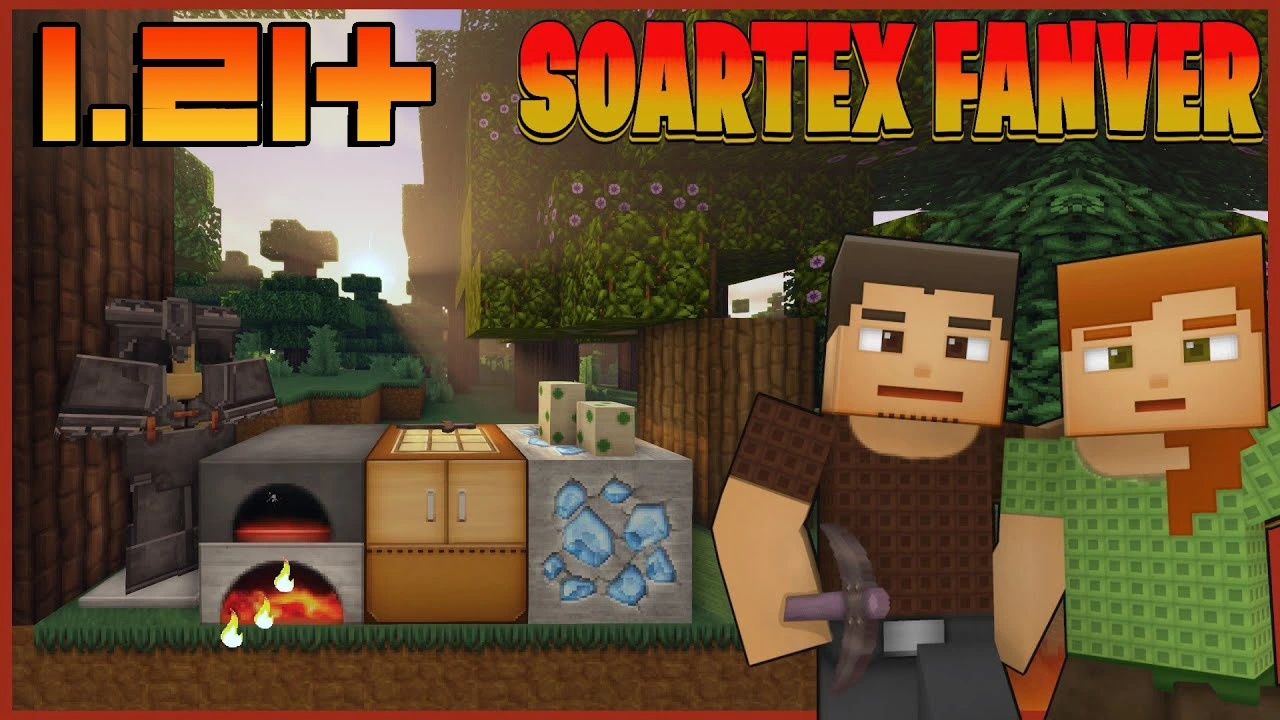Quantum Construction… At first glance, this term may sound like an oxymoron—combining the most popular sandbox in the world of video games with the most complex domain of theoretical physics. 🎮 Yet, the act of placing blocks, the core mechanic of Minecraft, embodies a philosophical process that oscillates between conscious creativity and the aesthetic possibilities brought by randomness. While the Minecraft universe is fundamentally deterministic in code, the player’s experience is an indeterministic artistic process.
Contents
In this article, we will examine the “moment of decision” right before placing a block as a quantum superposition. We’ll explore how the player collapses the “probability wave” by selecting a block from their palette—and how these seemingly random choices transform into intentional design strategies that bring artistic order from chaos. This is a study of experimental creativity and the philosophy of Quantum Construction in Minecraft.
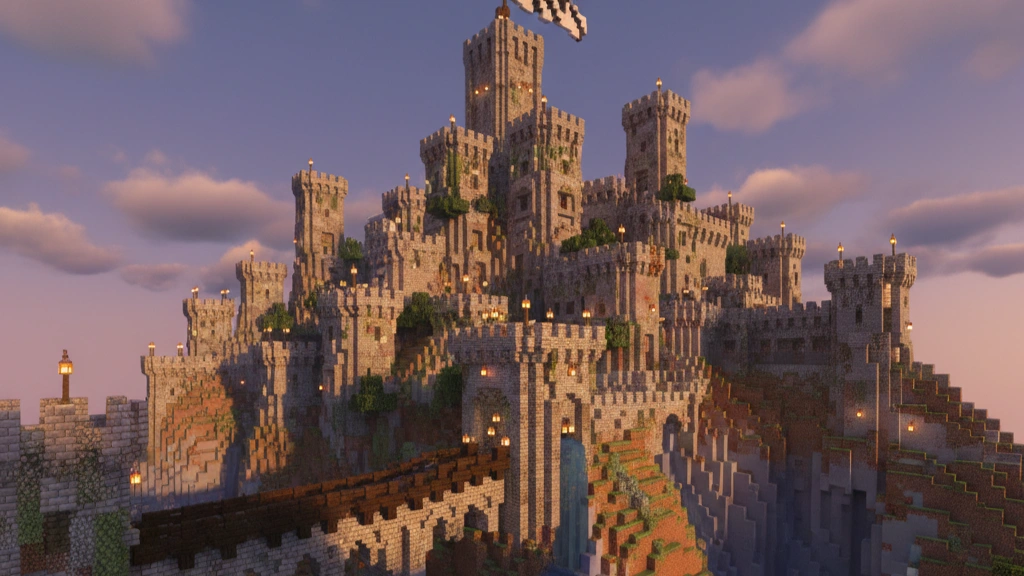
1. The Concept of Randomness in the Minecraft Universe 🧱
At the heart of Minecraft lies randomness. The moment we start the game, a pseudo-random number generator based on a “seed” value creates a unique world composed of billions of blocks. The rise of mountains, the flow of rivers, the distribution of ores and biomes—all depend on this algorithmic chaos. The player’s challenge is to build order within it.
But the randomness we focus on here is not the one provided by the game—it’s the randomness we bring into it. If you watch an experienced Minecraft builder, you’ll rarely see them using just one type of block. When constructing a castle wall, their inventory (hotbar) might contain:
- Stone Brick
- Mossy Stone Brick
- Cracked Stone Brick
- Andesite
- Gravel
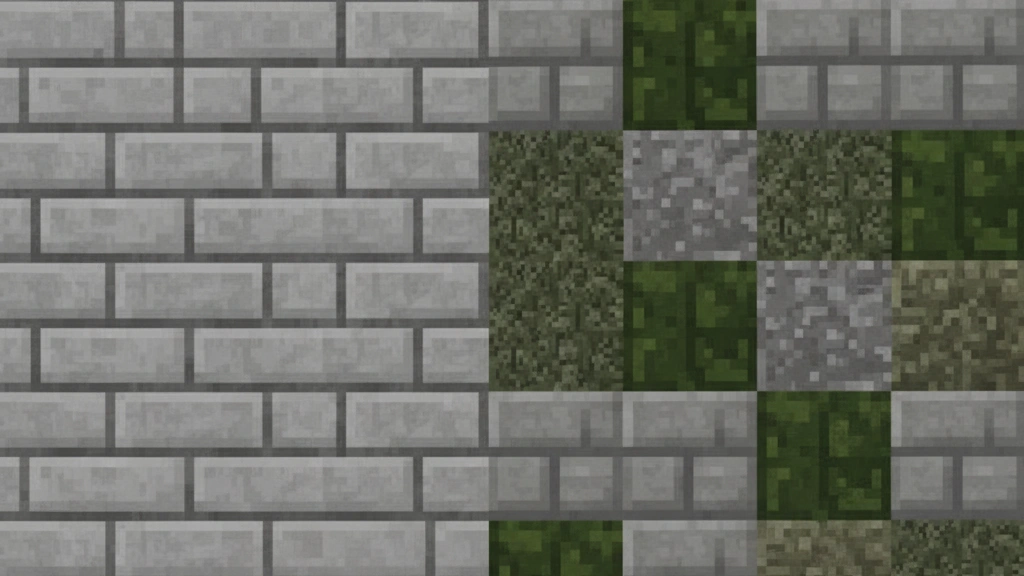
The builder doesn’t follow a strict mathematical pattern when placing these blocks. Instead, they “paint” the wall intuitively and largely at random. This act marks the beginning of experimental creativity. The goal is to transform an artificial, flat-looking surface into one that feels organic and “lived in.” This process resembles the survival mode building experience, where players use limited yet diverse resources. The player consciously uses chaos as a design tool.
2. Inspired by Quantum Physics: Superposition and Block Placement 🔬
Let’s take a quick detour into theoretical physics. One of the core principles of quantum mechanics is superposition. Simply put, a quantum particle (like an electron) can exist in multiple states simultaneously until it is “observed” or “measured.” Schrödinger’s Cat, the famous thought experiment, translates this to the macroscopic world—the cat is both dead and alive until the box is opened.
Now, let’s apply this metaphor to Minecraft:
- The Block in Superposition: The player faces an empty (X, Y, Z) coordinate with five different block types in hand. That empty space, at that instant, contains the superposition of all five block possibilities. It is not yet a Mossy Brick, nor a Cracked Brick—it is probabilistically all of them at once.
- The Observer Effect (Player): The moment the player right-clicks, a choice is made. This action is analogous to what physicists call the “collapse of the wave function.”
- The Collapse (Block Placement): The probability wave collapses, and the superposition ends. The empty space becomes a definite, observable state: it is now an Andesite block.
This Quantum Construction process occurs with every single block placed. A wall of hundreds of blocks is thus the cumulative outcome of hundreds of quantum decisions—hundreds of wave function collapses.
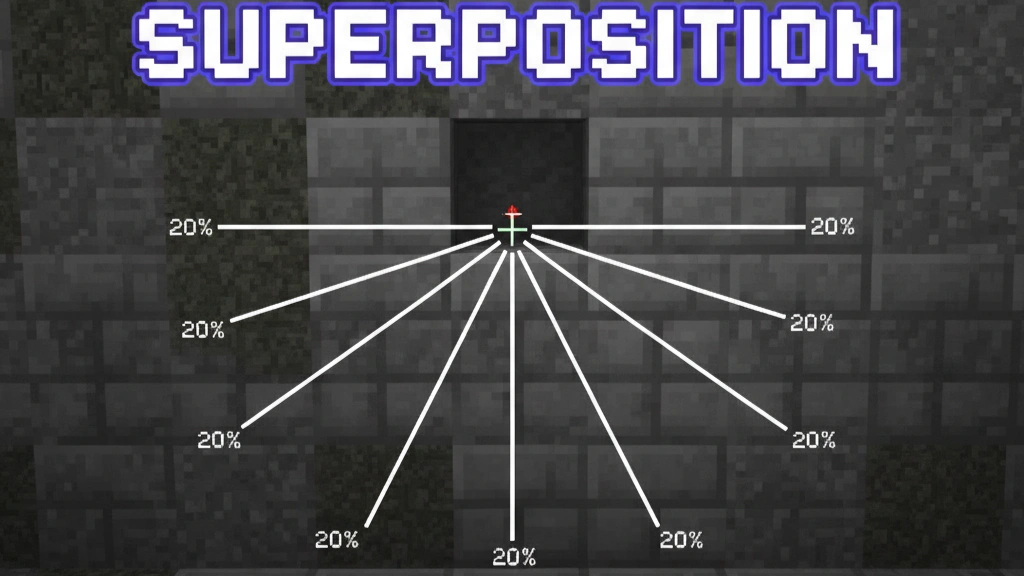
We can summarize this metaphorical relationship between the two worlds in a table:
| Quantum Physics Concept | Minecraft Building Mechanic (Metaphor) |
This perspective philosophically aligns with Wikipedia’s definition of Quantum Superposition: a system simultaneously existing in multiple states until measurement reduces it to one.
3. From Randomness to Art: Order Through the Player’s Eye 🎨
So, how does so much random “collapse” produce not a chaotic mess, but an aesthetically pleasing structure?
The answer lies in the dance between intentional design and randomness. 🕺 The player does not act purely at random. As an “Observer,” they guide the probabilities while collapsing the wave:
- Palette Limitation: The player consciously curates their inventory. If building a desert temple, their palette includes Sandstone, Cut Sandstone, and Smooth Sandstone—not Stone Bricks. This narrows the “probability universe.”
- Intuitive Guidance: The player adjusts on the fly: “Too many mossy blocks together” or “this area looks too flat, needs some cracked texture.” Thus, randomness is actively managed.
- Emergent Order: The result is neither fully planned (like a chessboard) nor entirely chaotic (like TV static). The resulting structure has an emergent order—the cumulative effect of moment-to-moment decisions.
This process is the act of creating order from chaos. Creativity becomes not the art of full control, but the art of guiding possibilities. This aesthetic becomes more vivid with a good texture pack, as texture packs emphasize subtle variations between blocks.

4. The Philosophy of Building: Experimental Creativity 🧠
Embracing the Quantum Construction philosophy fundamentally transforms how a Minecraft player approaches creativity. It marks a shift from rigid architectural methods—where every block is pre-planned through a “blueprint”—to a more organic, sculptural process where the structure grows itself.
This is the essence of experimental creativity. The player doesn’t start with a plan—they start with an intention: “I’m going to build a tower here.” The tower then gradually takes shape through hundreds of momentary decisions—each a “quantum collapse.” This approach connects to a broader concept in game design known as Emergent Gameplay, where player actions lead to complex, unexpected results that designers did not directly foresee.

In the future, this Quantum Construction philosophy could merge with ideas like AI-driven structures or autonomous cities in Minecraft. Artificial intelligence could learn a player’s aesthetic palette and use this “guided randomness” to build vast, organic-looking worlds.
Conclusion: The Beauty of Uncertainty
The concept of Quantum Construction reveals why Minecraft is more than a game—it’s a profound creative medium. It reminds us that the most fascinating art often emerges on the uncertain border between rigid rules and pure chaos.
Next time you hold a block in Minecraft, pause for a moment. Realize that the empty space before you is a superposition of infinite possibilities—and you are the “Observer” who collapses that wave into reality. Creativity is not about having choices—it’s about the courage to choose the most aesthetic one and collapse the wave function.

